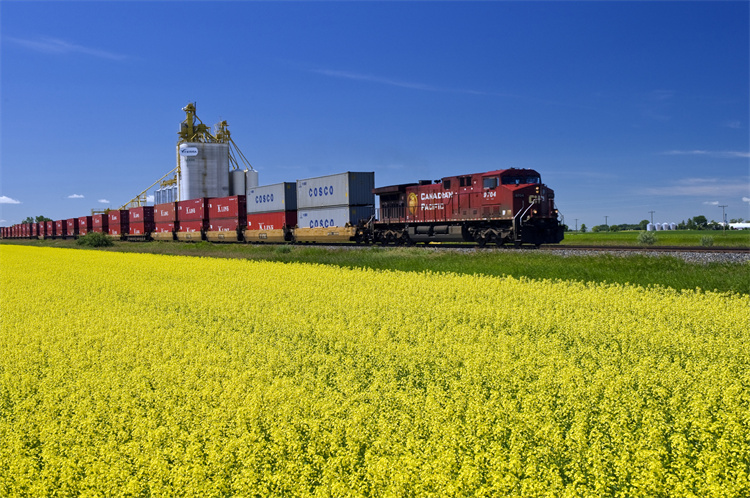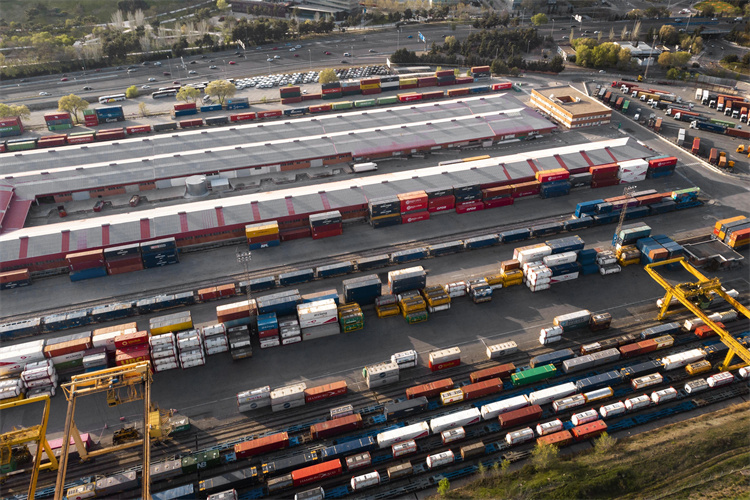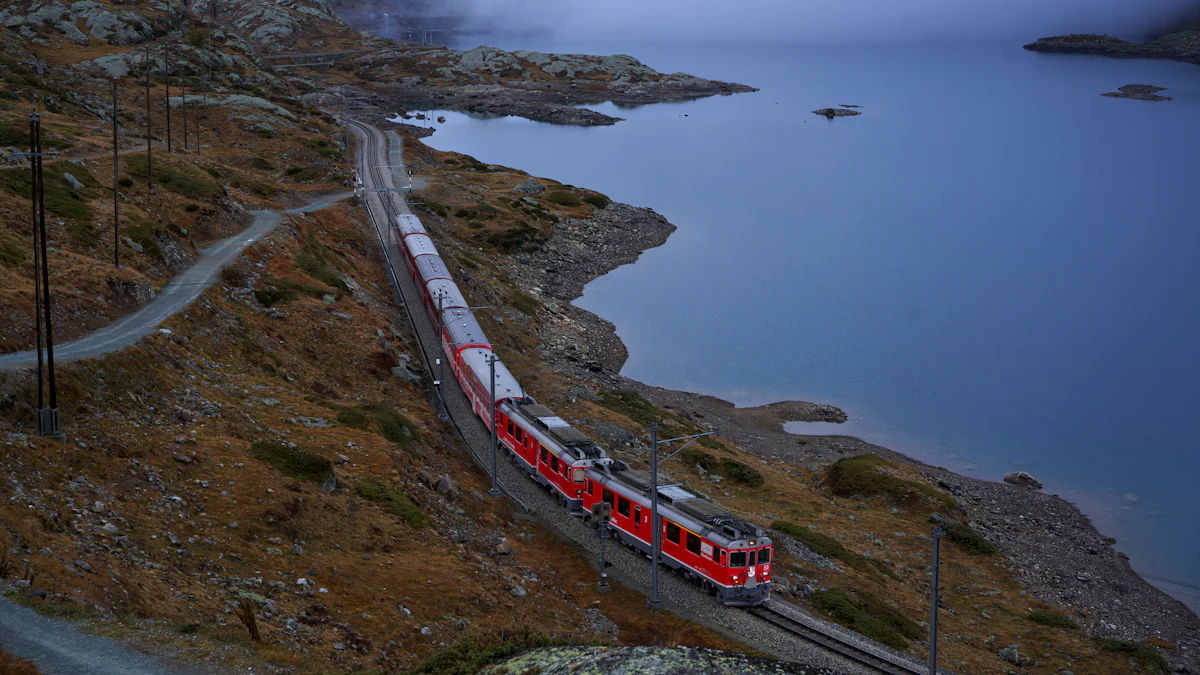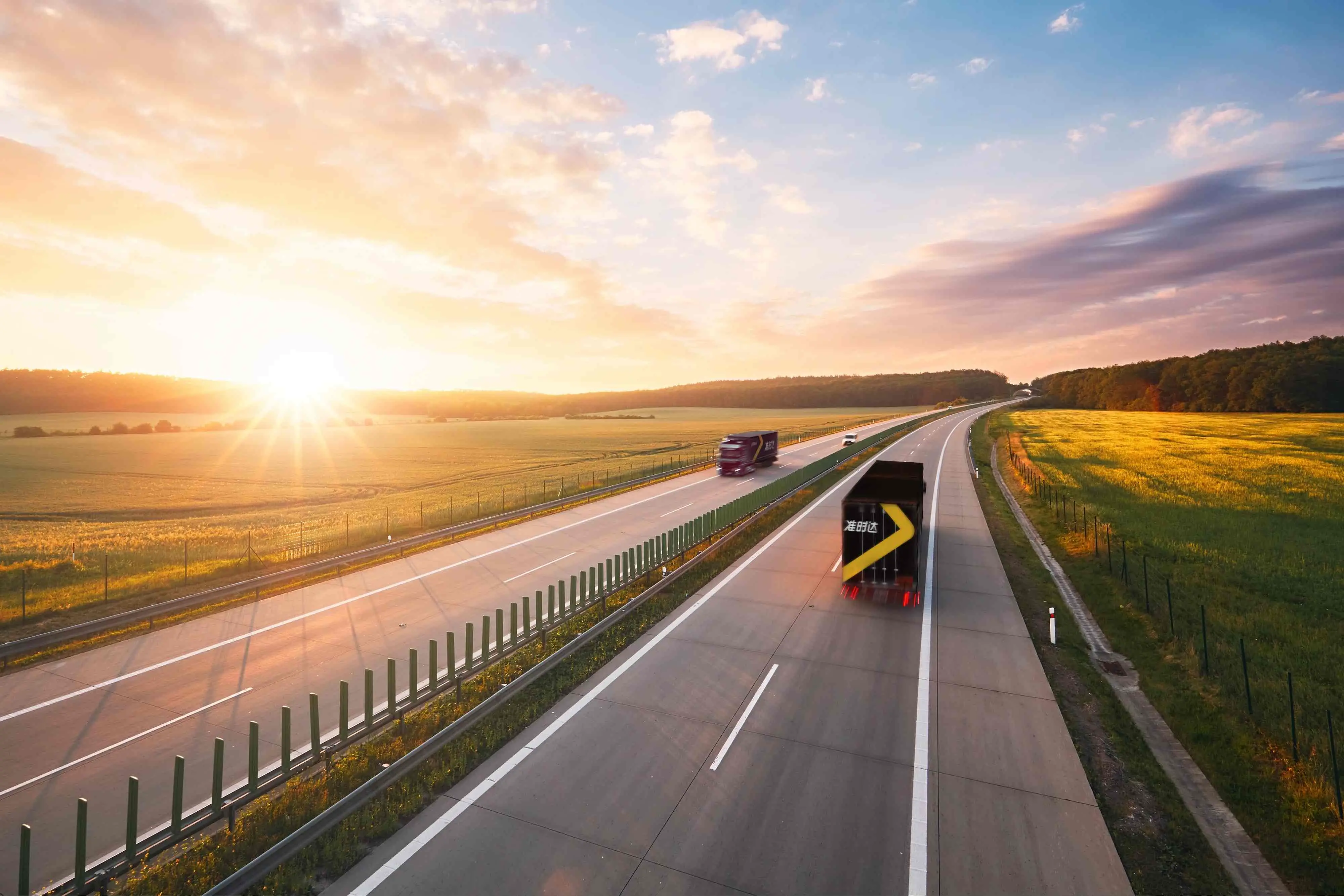Tracing the Tracks: Europe's Railway Evolution

Railways in Europe have played a pivotal role in shaping the continent's transportation landscape. The evolution of railway transportation has transformed European society and economy, providing efficient passenger transport and facilitating cross-border rail connections. Historical highlights reveal that the introduction of the international train network significantly boosted economic growth. Despite challenges in interoperability, modern railway transportation continues to thrive. The EU has witnessed a remarkable 50% increase in passenger rail traffic between 2021 and 2022, showcasing the enduring importance of European rail transport in connecting people and places.
Key Takeaways
Railways have been crucial in shaping Europe's transportation landscape, enhancing connectivity and economic growth.
The transition from animal-drawn carriages to steam locomotives marked a significant technological leap, revolutionizing transport efficiency.
High-speed rail networks have transformed travel in Europe, offering faster alternatives to traditional rail and air travel, while promoting sustainability.
Emerging technologies like Maglev and Hyperloop hold the potential to redefine rail travel, despite facing infrastructure and regulatory challenges.
JUSDA's China-Europe Express Rail service exemplifies modern logistics integration, providing a fast and cost-effective solution for international trade.
Collaboration through initiatives like Forum Train Europe is essential for overcoming interoperability challenges and achieving a connected railway network by 2050.
The Origins of Railways in Europe

Ancient Tracked Roads
Early examples of tracked transportation systems
In ancient times, civilizations laid the groundwork for modern railways by developing rudimentary tracked roads. These early systems consisted of grooves carved into stone paths, guiding wheels along a predetermined route. The Greeks and Romans utilized such tracks to facilitate the movement of heavy loads, primarily for agricultural and construction purposes. These primitive tracks marked the beginning of a long journey toward the sophisticated railway systems we know today.
Transition from animal-drawn to mechanized systems
The transition from animal-drawn carriages to mechanized systems represented a significant leap in transportation technology. The Swansea and Mumbles Railway in Wales, UK, holds the distinction of being the world’s first passenger horsecar railway service, commencing on March 25, 1807. This service demonstrated the potential of railways for passenger transport. As the Industrial Revolution gained momentum, inventors sought ways to harness steam power, paving the way for the development of steam locomotives. This shift from animal power to steam engines revolutionized the efficiency and speed of rail transport.
The Advent of Steam Power
Introduction of steam locomotives
The introduction of steam locomotives marked a pivotal moment in the history of railways. George Stephenson, a key figure in this transformation, built the first railway line in the world in 1825, connecting Stockton and Darlington in England. This line primarily transported coal, showcasing the potential of steam power in moving goods efficiently. The success of this venture spurred further developments, leading to the establishment of the first steam passenger railway in continental Europe between Floridsdorf and Deutsch Wagram in 1837. These early steam locomotives laid the foundation for the modern railway system in Europe.
Key figures and inventions in early railway development
Several key figures and inventions played crucial roles in the early development of railways. George Stephenson emerged as a pioneer, designing the "Rocket," one of the first successful steam locomotives. His innovations set the standard for future locomotive designs. Other inventors contributed to advancements in track design and safety mechanisms, enhancing the reliability and efficiency of rail transport. These early efforts culminated in the widespread adoption of railways across Europe, facilitating the movement of both passengers and goods.
The evolution of railways in Europe transformed the continent's transportation landscape. The introduction of steam power enabled the efficient movement of European goods trains, boosting economic growth. Despite challenges in interoperability, the railway system continued to expand, connecting distant regions and fostering trade. The legacy of these early developments remains evident in the modern rail networks that crisscross Europe today.
The Golden Age of Railways
Expansion Across Europe
Major railway networks and their impact
During the golden age of European railways, the continent witnessed a remarkable expansion of railway networks. These networks transformed transportation by connecting cities and countries, facilitating the movement of people and goods. The construction of major railway lines, such as the Orient Express and the Trans-Siberian Railway, played a crucial role in enhancing trade and travel. These routes not only boosted economic growth but also fostered cultural exchange across borders. The railway became a symbol of progress and innovation, driving industrialization and urbanization in many regions.
Differences in railway development among European countries
Railway development varied significantly among European countries. Each nation adopted unique approaches to building and operating their rail systems. For instance, Spain boasts the second-largest high-speed rail network globally, surpassed only by China. In contrast, other countries focused on enhancing existing infrastructure rather than expanding high-speed lines. The differences in construction costs and usage patterns reflect the diverse priorities and resources of each nation. While some countries experienced performance declines in large railway systems, others with smaller networks saw improvements. This patchwork of national high-speed lines highlights the challenges of achieving interoperability across borders.
Technological Innovations in Passenger Transport
Advancements in railway engineering and design
The golden age of railways in Europe also marked significant advancements in railway engineering and design. Engineers introduced new materials and construction techniques, improving the durability and efficiency of railway infrastructure. Innovations in track design and locomotive technology enhanced the speed and safety of trains. These developments allowed for the creation of more reliable and comfortable passenger services, attracting more travelers to the railway. The focus on engineering excellence laid the foundation for modern rail systems that continue to serve millions of passengers today.
Introduction of electric trains and signaling systems
The introduction of electric trains revolutionized passenger transport during this era. Electric trains offered a cleaner and more efficient alternative to steam locomotives, reducing pollution and operational costs. The implementation of advanced signaling systems further improved safety and coordination on the tracks. These technological innovations enabled railways to handle increased traffic and provide faster, more reliable services. As a result, the railway became an integral part of daily life, connecting communities and supporting economic growth across Europe.
Modern Advancements in Railway Transportation

High-Speed Rail and Passenger Transport
Development and impact of high-speed rail networks
High-speed rail networks have revolutionized travel across Europe, offering a fast and efficient alternative to traditional railways. The development of these networks has significantly reduced travel times between major cities, enhancing connectivity and accessibility. For instance, the TGV in France and the Tōkaidō Shinkansen in Japan serve as prime examples of how high-speed trains can transform passenger transport. These trains reach speeds exceeding 200 km/h, providing a competitive edge over air travel on certain routes. The European Commission recognizes high-speed rail as a cornerstone of its Green Deal, emphasizing its role in reducing carbon emissions and promoting sustainable transportation.
Notable high-speed rail projects in Europe
Several notable high-speed rail projects have emerged in Europe, each contributing to the continent's transportation landscape. The Madrid-Barcelona line in Spain exemplifies the success of high-speed rail, where it has captured a significant market share from air travel. This shift highlights the convenience and efficiency of high-speed trains. Additionally, the EU continues to invest in expanding these networks, aiming to improve interoperability and create a seamless European timetable. Such projects not only enhance passenger convenience but also stimulate economic growth by connecting urban centers and fostering regional development.
Emerging Technologies and JUSDA's Role
Maglev and Hyperloop innovations
Emerging technologies like Maglev and Hyperloop represent the next frontier in railway innovation. Maglev trains, which use magnetic levitation to eliminate friction, promise even faster travel speeds. Hyperloop technology, still in development, envisions passenger pods traveling through low-pressure tubes at unprecedented speeds. These innovations hold the potential to redefine rail travel, offering new possibilities for both passenger and freight transport. However, challenges such as infrastructure costs and regulatory hurdles must be addressed before widespread adoption.
Future potential and challenges of new technologies
The future potential of Maglev and Hyperloop technologies is immense, yet they face several challenges. Infrastructure development requires substantial investment, and achieving interoperability with existing rail systems poses technical difficulties. Despite these obstacles, the benefits of reduced travel times and increased efficiency make these technologies attractive. JUSDA plays a crucial role in exploring these advancements, leveraging its expertise in logistics to integrate new technologies into the global supply chain. By embracing innovation, JUSDA aims to enhance the efficiency of railways in Europe and beyond.
JUSDA's China-Europe Express Rail
Overview and significance in modern logistics
JUSDA's China-Europe Express Rail service exemplifies the integration of modern logistics with traditional rail transport. This service connects China and Europe through a reliable railway network, offering a faster alternative to sea freight and a more cost-effective option than air freight. With a transit time of 15-20 days, it provides an efficient solution for transporting goods such as electronics and medical supplies. The service's significance lies in its ability to bridge continents, facilitating trade and enhancing supply chain efficiency.
Impact on European and Chinese markets
The China-Europe Express Rail service has a profound impact on both European and Chinese markets. It strengthens trade relations by providing a direct and efficient route for European goods train transport. This service enhances the competitiveness of businesses by reducing logistics costs and delivery times. As a result, it contributes to the economic dynamism of regions connected by the railway. JUSDA's commitment to innovation and efficiency ensures that this service remains a vital component of modern logistics, supporting the growth of international trade.

JUSDA Solutions
To provide you with professional solutions and quotations.
Railways in Europe have profoundly shaped the continent's history and continue to evolve. Ongoing projects, like high-speed rail expansions, promise to redefine transportation. However, challenges such as maintaining high performance and achieving interoperability persist. Forum Train Europe and timetable conferences play crucial roles in addressing these issues. By fostering collaboration and innovation, Europe can achieve a connected railway network by 2050. As Forum Train Europe and timetable conferences continue to guide this evolution, the railway remains a symbol of progress and connectivity.
See Also
Exploring Innovations in Logistics Technology for Tomorrow
Preparing for the Upcoming Shift in Transportation Tech
Navigating Tomorrow's Logistics Through Digital Innovations
